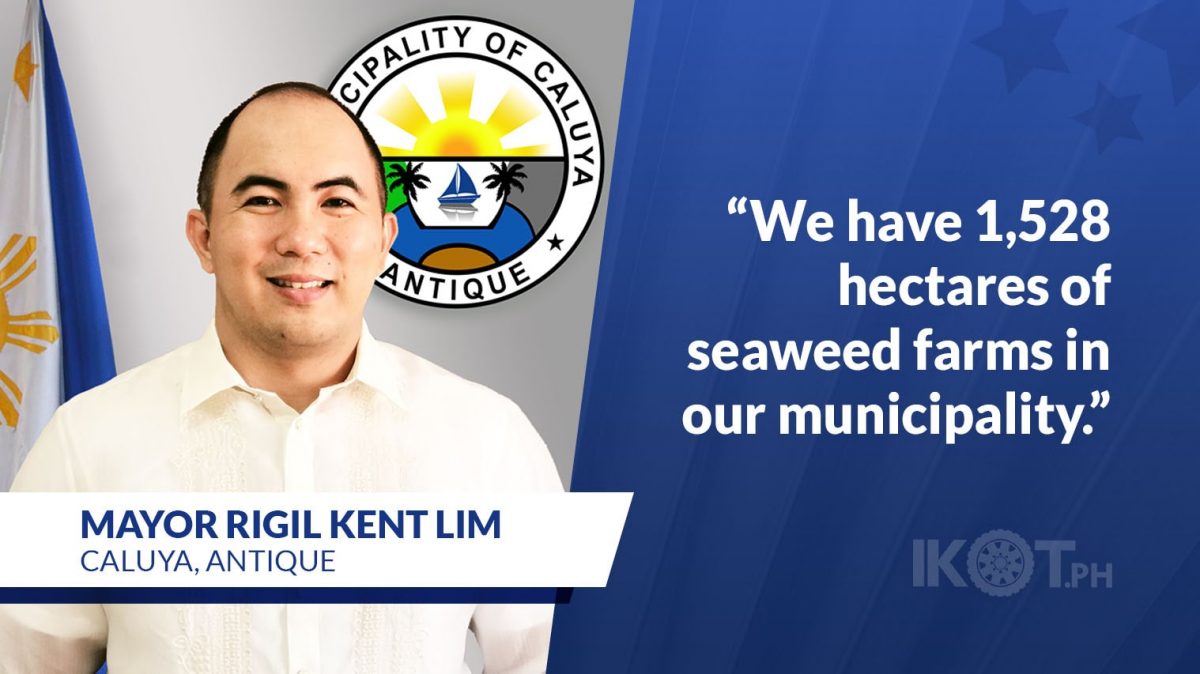Seaweed cultivation remains one of the major sources of income on the island municipality of Caluya despite the ongoing coronavirus disease (COVID-19) pandemic, Mayor Rigil Kent Lim said.
“We have 1,528 hectares of seaweed farm in our municipality,” Lim explained, adding the seaweed cultivation is year-round in their municipality with the local farmers harvesting every two months.
“There are farmers who operate at least three to four hectares of seaweed in our municipality,” he said, adding their harvests are being sold to local traders for P60 per kilogram.
The seaweeds are either being processed as chips and noodles or are being used as emulsifiers for commercial products.
“The seaweed’s carrageenan (substance extracted from the seaweed) is also being used in the production of toothpaste, soap, and other commercial products, which is why there are traders who are interested in buying it,” Lim said.
Due to the promising seaweed cultivation in their municipality, more farmers are encouraged to engage in such livelihood, he stressed.
“3,402 seaweed operators in Caluya are producing the plant year-round.”
Allete Gayatin, senior aquaculturist at the Office of the Provincial Agriculture (OPA) in Antique province, said 3,402 seaweed operators in Caluya are producing the plant year-round.
Meanwhile, Rodrigo Fallorina Jr., a farm technician under the Caluya Municipal Agriculture Office (MAO), said they were able to produce 3,176,24 metric tons of seaweed last year.
“We are using the monoline or floating method in our seaweed culture,” Fallorina said.
The monoline or floating method uses old tires to tie their seedlings using straw lace and have them float on their municipal water.
He said they cultivate the Kappaphycus alvarezii species, which is considered the largest tropical red algae and has a high growth rate.
“Our seaweed operators were not so economically affected by the COVID-19.”
“Our seaweed operators were not so economically affected by the COVID-19 because there were traders who were buying their produce,” as far as Cebu, Fallorina said.
Only Caluya and Culasi have year-round seaweed production with the towns of Libertad and Pandan having only seasonal production, Gayatin added.

